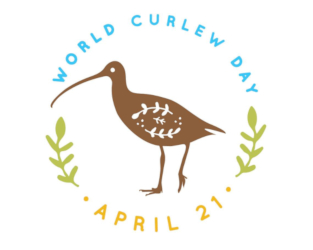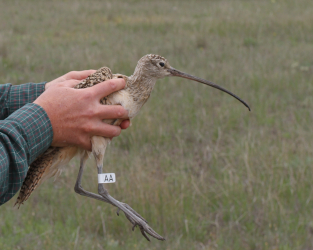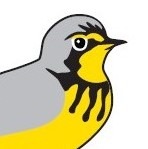By Dr. David Bradley, Director – British Columbia, Bird Studies Canada

The family of bird species that includes curlews (as well as godwits and some other large waders) is one of the most threatened bird families in the world. Over half of the species in this family are of global conservation concern. That’s why certain conservation organizations around the world have started to recognize April 21 as World Curlew Day – a day for learning more about and celebrating these at-risk birds.
This is perfect timing where curlews that spend part of their year in Canada are concerned. Each year at around this time, Long-billed Curlews arrive in British Columbia and amass in large groups as they wait for the snow to melt. This year is no different! After spending over 240 days in California during the non-breeding season, the adults are keen to get the breeding season going. One of the birds that Bird Studies Canada staff tracked last year just arrived at the Skookumchuck Prairie Important Bird and Biodiversity Area for a third year running!
What better time than World Curlew Day to tell you about our curlew research plans for 2019? This year, we are taking the study to Prince George, BC – right into the far northwest of the Long-billed Curlew’s breeding range. Curlews have only expanded into this crook in the course of the Fraser River in the past few decades, and now take full advantage of the land being used for ranching and farming in this area. We will be locating and following nests there, and comparing them to those we found in 2017 in the natural grasslands of southeastern BC. Using satellite transmitters and alphanumeric leg flags, we hope to successfully track the migration of these “pioneer” birds on the frontier of their breeding range. As an added bonus, we will be deploying GPS tags on some birds, which will allow us to pinpoint their locations with a high level of accuracy. Will these birds spend the winter on the California coastline, or will they loop around the Rockies and head to the Gulf Coast? Only time will tell! Learning more about this population of Long-billed Curlews will help us better understand how to conserve this species at risk.

Releasing a Long-billed Curlew with an alphanumeric leg tag
Photo: David Bradley
You can find more information about this Long-billed Curlew tracking project in a feature article from the Summer 2018 issue of BirdWatch Canada magazine. Thank you for supporting Bird Studies Canada’s work for birds, and for taking the time to learn something new about curlews this World Curlew Day! We hope to bring you more exciting curlew updates in the coming months.

